
Ernest Miller Hemingway was an American novelist, short-story writer, journalist, and sportsman. His economical and understated style—which he termed the iceberg theory—had a strong influence on 20th-century fiction, while his adventurous lifestyle and his public image brought him admiration from later generations. Hemingway produced most of his work between the mid-1920s and the mid-1950s, and he was awarded the 1954 Nobel Prize in Literature. He published seven novels, six short-story collections, and two nonfiction works. Three of his novels, four short-story collections, and three nonfiction works were published posthumously. Many of his works are considered classics of American literature.

Adventures of Huckleberry Finn or as it is known in more recent editions, The Adventures of Huckleberry Finn, is a novel by American author Mark Twain, which was first published in the United Kingdom in December 1884 and in the United States in February 1885.
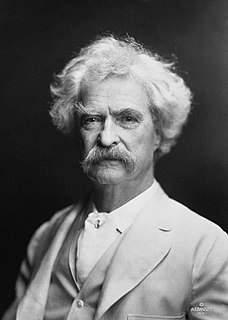
Samuel Langhorne Clemens, known by his pen name Mark Twain, was an American writer, humorist, entrepreneur, publisher, and lecturer. He was lauded as the "greatest humorist the United States has produced," and William Faulkner called him "the father of American literature". His novels include The Adventures of Tom Sawyer (1876) and its sequel, Adventures of Huckleberry Finn (1884), the latter of which has often been called the "Great American Novel".
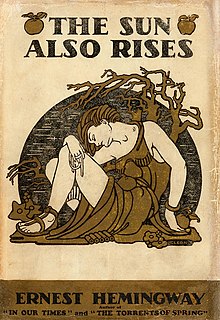
The Sun Also Rises is a 1926 novel by American writer Ernest Hemingway, his first, that portrays American and British expatriates who travel from Paris to the Festival of San Fermín in Pamplona to watch the running of the bulls and the bullfights. An early and enduring modernist novel, it received mixed reviews upon publication. However, Hemingway biographer Jeffrey Meyers writes that it is now "recognized as Hemingway's greatest work", and Hemingway scholar Linda Wagner-Martin calls it his most important novel. The novel was published in the United States in October 1926 by Scribner's. A year later, Jonathan Cape published the novel in London under the title Fiesta. It remains in print.
"The Killers" is a short story by Ernest Hemingway, published in Scribner's Magazine in 1927. After its appearance in Scribner's, the story was published in Men Without Women,Snows of Kilimanjaro, and The Nick Adams Stories. The writer's depiction of the human experience, his use of satire, and the everlasting themes of death, friendship, and the purpose of life have contributed to make "The Killers" one of Hemingway's most famous and frequently anthologized short stories.

Roughing It is a book of semi-autobiographical travel literature by Mark Twain. It was written in 1870–71 and published in 1872, as a prequel to his first travel book The Innocents Abroad (1869). Roughing It is dedicated to Twain's mining companion Calvin H. Higbie, later a civil engineer who died in 1914.
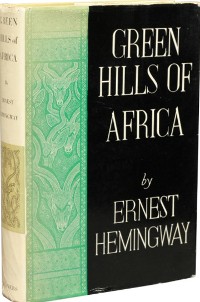
Green Hills of Africa is a 1935 work of nonfiction by American writer Ernest Hemingway. Hemingway's second work of nonfiction, Green Hills of Africa is an account of a month on safari he and his wife, Pauline Marie Pfeiffer, took in East Africa during December 1933. Green Hills of Africa is divided into four parts: "Pursuit and Conversation", "Pursuit Remembered", "Pursuit and Failure", and "Pursuit as Happiness", each of which plays a different role in the story.
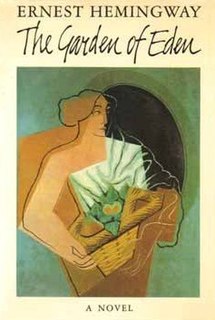
The Garden of Eden is the second posthumously released novel of Ernest Hemingway, published in 1986. Hemingway started the novel in 1946 and worked on the manuscript for the next 15 years, during which time he also wrote The Old Man and the Sea, The Dangerous Summer, A Moveable Feast, and Islands in the Stream.

The iceberg theory or theory of omission is a writing technique coined by American writer Ernest Hemingway. As a young journalist, Hemingway had to focus his newspaper reports on immediate events, with very little context or interpretation. When he became a writer of short stories, he retained this minimalistic style, focusing on surface elements without explicitly discussing underlying themes. Hemingway believed the deeper meaning of a story should not be evident on the surface, but should shine through implicitly.
Literature of the 19th century refers to world literature produced during the 19th century. The range of years is, for the purpose of this article, literature written from (roughly) 1799 to 1900. Many of the developments in literature in this period parallel changes in the visual arts and other aspects of 19th-century culture.

"Big Two-Hearted River" is a two-part short story written by American author Ernest Hemingway, published in the 1925 Boni & Liveright edition of In Our Time, the first American volume of Hemingway's short stories. It features a single protagonist, Hemingway's recurrent autobiographical character Nick Adams, whose speaking voice is heard just three times. The story explores the destructive qualities of war which is countered by the healing and regenerative powers of nature. When it was published, critics praised Hemingway's sparse writing style and it became an important work in his canon.

The Penn State University Press, also known as The Pennsylvania State University Press, was established in 1956 and is a non-profit publisher of scholarly books and journals. It is the independent publishing branch of the Pennsylvania State University and is a division of the Penn State University Library system. Penn State University Press publishes books and journals of interest to scholars and general audiences. As a part of a land-grant university with a mandate to serve the citizens of the commonwealth of Pennsylvania, it also specializes in works about Penn State University, Pennsylvania, and the mid-Atlantic region. The areas of scholarship the Press is best known for are art history, medieval studies, Latin American studies, rhetoric and communication, religious studies, and Graphic Medicine. In 2016 the Press launched PSU Press Unlocked, an open access platform featuring over 70 books and journals. The Press acquired academic publisher Eisenbrauns, which specializes in ancient Near East and biblical studies, in November 2017. Eisenbrauns continues to publish as an imprint of the Press.
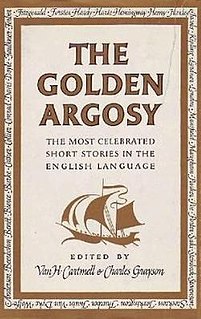
The Golden Argosy: The Most Celebrated Short Stories in the English Language is an anthology edited by Charles Grayson and Van H. Cartmell, and published by Dial Press in 1955. It is famous for being the favorite book of novelist Stephen King.

Edgar Allan Poe has appeared in popular culture as a character in books, comics, film, and other media. Besides his works, the legend of Poe himself has fascinated people for generations. His appearances in popular culture often envision him as a sort of "mad genius" or "tormented artist", exploiting his personal struggles. Many depictions of Poe interweave elements of his life with his works, in part due to Poe's frequent use of first-person narrators, suggesting an erroneous assumption that Poe and his characters are identical.

"Indian Camp" is a short story written by Ernest Hemingway. The story was first published in 1924 in Ford Madox Ford's literary magazine Transatlantic Review in Paris and republished by Boni & Liveright in Hemingway's first American volume of short stories In Our Time in 1925. Hemingway's semi-autobiographical character Nick Adams—a child in this story—makes his first appearance in "Indian Camp", told from his point of view.

"Fifty Grand" is a short story by Ernest Hemingway. It was first published in The Atlantic Monthly in 1927, and it appeared later that year in Hemingway's short story collection Men Without Women.
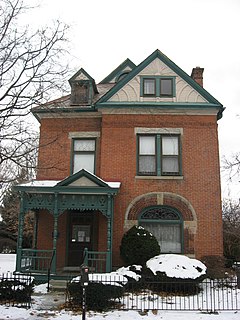
Writers' homes are locations where writers lived. Frequently, these homes are preserved as historic house museums and literary tourism destinations, called writer's home museums, especially when the homes are those of famous literary figures. Frequently these buildings are preserved to communicate to visitors more about the author than their work and its historical context. These exhibits are a form of biographical criticism. Visitors of the sites who are participating in literary tourism, are often fans of the authors, and these fans find deep emotional and physical connections to the authors through their visits.
In September 2003, Barnes & Noble Books of New York began to publish The Collector's Library series of some of the world's most notable literary works. By October 2005, fifty-nine volumes had been printed. Each unabridged volume is book size octodecimo, or 4 x 6-1/2 inches, printed in hardback, on high-quality paper, bound in real cloth, and contains a dust jacket. In 2015, The Collector's Library was acquired by Pan Macmillan.
A literary feud is a conflict or quarrel between well-known writers, usually conducted in public view by way of published letters, speeches, lectures, and interviews. In the book Literary Feuds, Anthony Arthur describes why readers might be interested in the conflicts between writers: "we wonder how people who so vividly describe human failure can themselves fall short of perfection."













